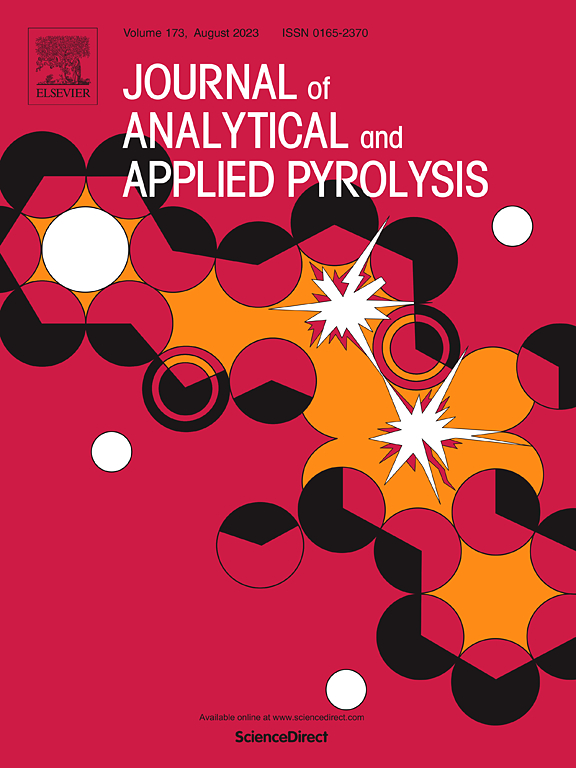A critical review of the influence of supercritical water on the pyrolysis of plastic waste: Modelling approaches and process effects
IF 5.8
2区 化学
Q1 CHEMISTRY, ANALYTICAL
引用次数: 0
Abstract
Supercritical water has emerged as a promising solvent for the pyrolysis of plastic waste, offering advantageous effects on both the process and its products. Experimental observations have shown that the presence of supercritical water reduces coke formation and enhances liquid yield during plastic waste pyrolysis. However, these effects are not significant for small non-heteroatomic hydrocarbons such as hexane or tert-butylbenzene. Consequently, the influence of supercritical water only becomes prominent for larger hydrocarbons. Despite this, modelling efforts have predominantly focused on these small, often heteroatomic, compounds. This review aims to clarify how supercritical water impacts the pyrolysis of polyolefins, highlighting significant effects and proposing approaches for modelling supercritical water pyrolysis. Essential to understand is the phase behaviour exhibited by water-hydrocarbon systems. To this end, we have further explored promising equations of state for the modelling of such systems, particularly in the supercritical domain. Additionally, the effects of supercritical water on the pyrolysis process are examined both as a medium and as a reactant. As a medium, supercritical water influences the process mainly through phase separation and dilution, but it can also stabilize molecules and affect diffusion limitations. As a reactant in non-heteroatom containing systems, water serves primarily as a radical carrier.
超临界水对塑料废弃物热解影响的重要综述:建模方法和工艺效应
超临界水已成为塑料废弃物热解过程中一种很有前途的溶剂,对热解过程及其产品都有好处。实验观察表明,在塑料废物热解过程中,超临界水的存在可减少焦炭的形成并提高液体产量。然而,这些影响对于正己烷或叔丁基苯等小的非原子烃类并不明显。因此,超临界水只对较大的碳氢化合物有显著影响。尽管如此,建模工作仍主要集中在这些小的、通常是异原子化合物上。本综述旨在阐明超临界水如何影响聚烯烃的热解,强调其重大影响,并提出超临界水热解建模方法。了解水-碳氢化合物体系所表现出的相行为至关重要。为此,我们进一步探索了此类系统建模的可行状态方程,尤其是在超临界领域。此外,我们还研究了超临界水作为介质和反应物对热解过程的影响。作为介质,超临界水主要通过相分离和稀释来影响过程,但它也可以稳定分子并影响扩散限制。作为非异质原子体系中的反应物,水主要是作为自由基载体。
本文章由计算机程序翻译,如有差异,请以英文原文为准。
求助全文
约1分钟内获得全文
求助全文
来源期刊
CiteScore
9.10
自引率
11.70%
发文量
340
审稿时长
44 days
期刊介绍:
The Journal of Analytical and Applied Pyrolysis (JAAP) is devoted to the publication of papers dealing with innovative applications of pyrolysis processes, the characterization of products related to pyrolysis reactions, and investigations of reaction mechanism. To be considered by JAAP, a manuscript should present significant progress in these topics. The novelty must be satisfactorily argued in the cover letter. A manuscript with a cover letter to the editor not addressing the novelty is likely to be rejected without review.

 求助内容:
求助内容: 应助结果提醒方式:
应助结果提醒方式:


